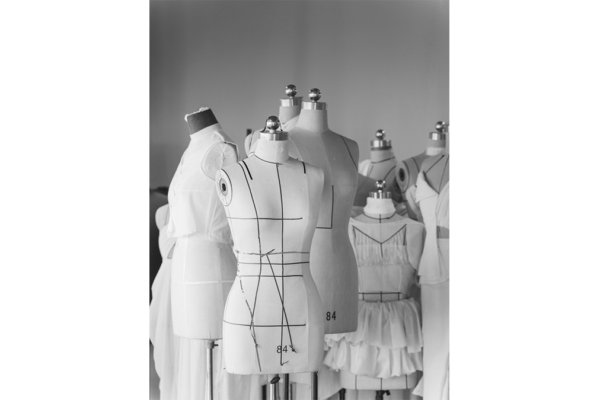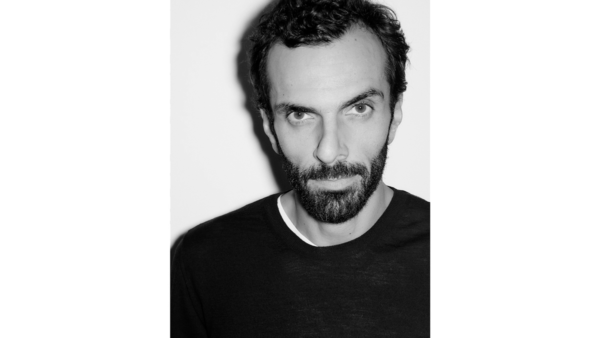Why Haute Couture still has a future
Far from the trends and changes in fashion, Haute Couture has a special place in the luxury market. But is this seemingly timeless position still viable in a sector that is constantly evolving? What value can it bring to brands today?

Can something still be fashionable after 160 years? Couture dates back to 1858, when Charles Frederick Worth, an English couturier based in Paris, created his “special House of new confections” at number 7, rue de la Paix. He was the first to create collections under his own signature, to see himself as a creator, and to present his work by having the clothes worn by living models who walked the floors of his luxurious salons. By offering new collections for each season, he invented today’s fashion cycle: spring-summer and fall-winter. Within a few years, the foundations for Couture were laid, with the help of other pioneers such as Paul Poiret, the first to launch his own perfume House in 1911, Jeanne Lanvin, Jean Patou, Madeleine Vionnet and Gabrielle Chanel, who notably introduced the concepts of boutiques, accessories and marketing. It was the start of a golden age that married unprecedented creativity with exceptional know-how. However, the arrival of ‘ready-to-wear’ in the 1960s and 1970s undermined both the business model of Couture and its place in the world of fashion.
An unchanging model, at the heart of transformations
Couture is certainly timeless, and independent of fashion trends. But this status underlies both its strengths and its potential weaknesses. While the regulations covering the sector have changed little since 1945 (when it gained legal recognition), the fashion landscape has been transformed many times, particularly with the accelerating pace of production and distribution cycles. Even today, the conditions required for Haute Couture are extremely demanding: collections must be tailor-made, by hand, and presented twice a year, in January and July. Each collection has to comprise at least 50 original creations for both daytime and evening wear, while the House must have a studio in Paris employing at least 15 people and an atelier with at least 20 people. Together, they provide a framework that is essential for maintaining the outstanding level of know-how required – while also creating a significant business challenge.
A complex balance
As a business, the complexity of Haute Couture lies in the tension that exists between the demanding levels of excellence and the changing expectations of clients… In an era of jeans and sneakers, does Couture still have any relevance? It is difficult to get precise figures about the Haute Couture market. The talk is of a global audience of 4,000 clients, with prices ranging from €100,000 for the simplest offerings to more than €1 million for the most elaborate, which require hundreds, if not thousands, of hours’ work. In total, the market is estimated at around €500 million, based on the collections shown during the two weeks of Haute Couture shows. By contrast, the ‘luxury products’ sector in general was estimated at €217 billion in 2020…
Profitability appears to be a constant challenge, as can be witnessed by the declining number of specialist players over the last few decades, not only in terms of Couture Houses themselves, but also their traditional suppliers – furriers, hatters, feather workers, costume jewelers, trimmers and embroiders… So, is Haute Couture condemned to disappear?
Boosting image and desirability
For Jean-Noël Kapferer, a professor at leading French business school HEC and the author of several books about management in the luxury market, Haute Couture is definitely still relevant today. “It’s the sign of absolute luxury,” he explains. In a sector where differentiation is essential, it “offers luxury brands an additional means of influence. A Couture show is art. By extending the limits of what is and isn’t feasible, Couture gives Houses a way of creating emotion, and of reawakening desire and the ability to dream – which is essential, as the latter inevitably starts to fade in the face of commercial success.” The challenge is therefore to transform desire into action, and interest into purchases, particularly for the benefit of other product categories. “The aura of Haute Couture brings a glow to other activities and transforms the perception of a brand. If there is one area where the ‘trickle down’ effect actually works, it’s in Haute Couture! Its daring and creativity will benefit the ready-to-wear segment, as it allows Houses to set high prices and thereby increase their symbolic authority.”
Didier Grumbach, honorary president of France’s Haute Couture Federation (FHC) and a leading figure in the sector for more than 50 years, recognizes this effect, having witnessed its impact from close quarters. “Even if they never actually get worn, Haute Couture pieces increase the status of the House presenting them.” The former chairman of Mugler also points to another decisive advantage of the activity: “In particular, Couture is a real help when it comes to launching a perfume offering.”
The potential of the UHNWIs
For Claudia D’Arpizio, a luxury sector expert at consultants Bain & Co., Haute Couture is particularly relevant when it comes to Ultra-High Net Worth Individuals (with more than $30 million available to invest). Such a target market may be limited in number, but it is growing – nearly 500 people became billionaires in 2020, taking their total to 2,755 – and it has a lot of potential. “In the United States, China and emerging markets, the UHNWI segment is growing rapidly, but it’s also very competitive. Haute Couture creates a space for a differentiating conversation with this very specific set of consumers, and the promise of a long-term relationship. Also, these clients will not only be buying Haute Couture. They could also be interested in High Jewelry, for example. As for the numbers, luxury purchasing by UHNWIs is estimated to be around €80 billion a year.” Haute Couture should therefore be seen as a way of creating relationships and opportunities. “It’s how Houses used to operate in the past. Mr. Balenciaga had very good relations with his clients, who then became ambassadors for the House.”
The conditions for success
Given this situation, why are so few Houses involved in Haute Couture? Aside from the requirements of the FNHC, the reason almost certainly lies in the fact that Haute Couture is an incredibly complex field in which to operate, requiring as much expertise from its business leaders and it does from its ateliers…
“Not all brands can legitimately position themselves in Haute Couture,” explains Jean-Noël Kapferer. “And there is, of course, a financial risk. But the biggest risk for a brand with a significant heritage is for it to become frozen in time through an excess of nostalgia, and to be paralyzed by its past. You have to strike the right balance between the brand’s heritage and the opportunities for its creative future.”
“Haute Couture only means something if it’s authentic and faithful to the brand’s DNA. Few Houses have the necessary authority and heritage,” confirms Claudia D’Arpizio, adding that this does not mean becoming a prisoner of a brand’s legacy. “If Haute Couture becomes a synonym for nostalgia, I don’t think it has great potential.”
For that very reason, Didier Grumbach highlights the role of the federation. “It’s essential that Haute Couture remains open and renews itself by bringing in new members. In that respect, relaxing the rules in order to invite new members is a good thing. By doing so, the arrival of Houses like Alaïa, Margiela, Jean-Paul Gaultier and Mugler in the 1990s brought a new dynamism to the business and captured the attention of the international media. Without it, the sector would have run out of steam.” Such openness does not mean a fall in the standards being demanded, however. “It’s just as important to stop inviting a House if it has nothing to offer! Creativity, know-how and modernity are vital.”
A new Haute Couture
Couture’s ability to be in touch with its era is, of course, at the heart of its ability to create value. As Claudia D’Arpizio points out, it is “in synch with today’s lifestyles. There is a desire for exquisite pieces that are no longer reserved for special occasions, but can be worn for any occasion when that person wants to feel special, which might be in the daytime and not just the evening.” Moreover, Haute Couture embodies the very highest level of “the human touch, which can sometimes be lacking in the luxury sector.” Her point is shared by Jean-Noël Kapferer, who highlights how its characteristics are contemporary and a reflection of the aspirations of the younger generation: ultra-creative, ultra-personalized, sustainable, timeless and experimental, with new forms, new materials and new volumes… In fact, could Haute Couture actually turn out to be the precursor for an entire industry’s future?


